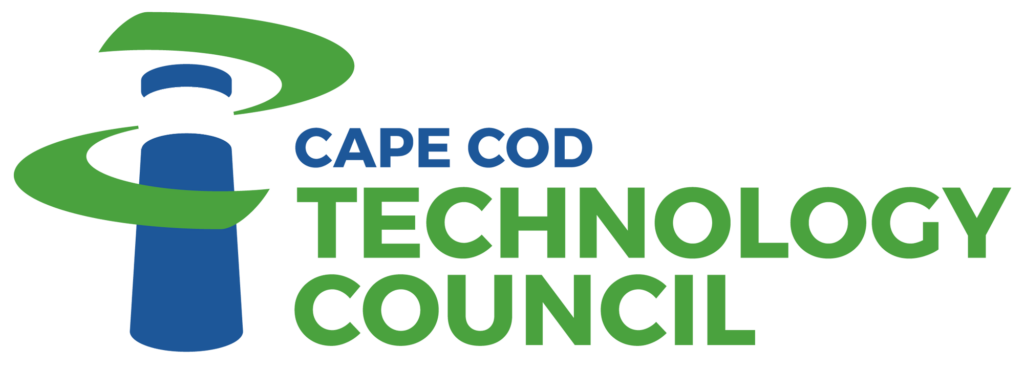Since Woods Hole is the site of the prestigious 6th International Oyster Symposium (the first time held outside the Far East), the Cape Cod Technology Council invited Roger Williams University Associate Professor of Marine Biology Dale Leavitt to speak at October’s First Friday Breakfast. We met at the Marine Biological Laboratory’s Swope Conference Center in Woods Hole, with an expansive view of Eel Pond and the Bell Tower.
It was familiar territory to Dr. Leavitt, who spent 20 years as a research associate in the biology department at Woods Hole Oceanographic Institution (WHOI). Roger Williams University is positioned similarly in the middle of the water, allowing him to continue researching and teaching the science and technology of oysters.
Oysters are hardy, bivalve mollusks ranging from Prince Edward Island to the Yucatan Peninsula, and tolerating temperature from below freezing to 100F, Leavitt told us. Filter feeders, oysters pump a large volume of water to remove very small particles. Small oysters are always male; when they get older they switch to female. However, if there are not enough males in the community some of the females will switch back.
Shortly after the Civil War, substantial commercial oyster operations began to evolve. By the early 1900s Rhode Island oysters generated the equivalent of 135 million in revenue, Leavitt told us.
Wild oysters have been severely impacted over the years. Currently, wild oyster stocks are severely depressed – due to diseases, industrial pollution, overcrowding and other environmental factors. Our natural oyster stocks are down around the world.
Why do we care? Oysters are very good for our waters. Larval oysters prefer settling on another bivalve shell, ideally another oyster. This creates habitat complexity, with hard substrate and bottom roughness forming a 3D landscape. Oyster reefs are important to the bay by providing a nursery area for a host of other species.
Furthermore, land-based discharge puts nitrogen and phosphorus into the water, feeding phytoplankton. As mentioned previously, oysters are excellent filters of algae.
From an ecological standpoint, we are interested in filtering. One person delivers 3.8kg of nitrogen to the environment annually. To counter that impact, Leavitt said, we need to produce 4,938 harvested oysters or 9,040 unharvested oysters per person.
Which brings us to oyster farming. Southern New England has about 1,000 oyster farms, about 30 of which have more than 10 employees. These farms produced $121 million in sales in 2012, providing 1,221 full time jobs and 1,294 part time jobs.
Aquaculture is a two and a half year cycle. In the hatchery, they grow phytoplankton and trick broodstock into reproducing by manipulating the water temperature. For single oysters they make the shell fragments so small that only one larvae can fit on it. Oysters stay in the hatchery until they are about half legal size.
From the hatchery, juvenile oysters are moved to the nursery, where they will stay until they are 75% legal size. In the nursery at RWU, an upweller system allows for a higher density of animals. It’s an experimental system for doing oyster research and testing out new technology.
When the oysters are no longer vulnerable to predators like crabs and starfish, they are ready to be restocked. This is the grow out stage.
Shellfish grow out strategies depend on the site. There are many intertidal farms on Cape Cod, as well as subtidal farms in shallow water. A floating farm – where flotation logs are tethered to either side of a cage – works but can be a navigation hazard. Oysters can also be suspended in cages hung from buoys or grown on the bottom in cages that look like lobster traps with shelves and mesh bags inside.
As Leavitt quoted one grower , “aquaculture is not biology, it’s materials handling”
Risks are predators, disease and parasites. They have health inspections so diseases aren’t moved from the hatchery to the farm site.
Technology developed at RWU includes a Floating Upweller System, or FLUPSY. In the FLUPSY the nursery is put inside a dock, which opens from the top to access the system. Originally they used these in marinas since they required access to power. Since then they created a system powered by photovoltaics.
Oysters in the wild
Part of the job of cleaning up our coastal environment is planting wild oysters. RI OGRE (Oyster Gardening for Restoration and Enhancement) is a volunteer fleet with 125 sites in Rhode Island, able to generate up to one million juvenile oysters each season.
Instead of making single oysters, wild oysters are grown in clumps to help protect them from predators. Once they are planted, monitoring is done to measure density, survival, growth, and condition. Leavitt says oysters in the wild are so far not holding their own, requiring annual restocking.
While oyster restoration still needs a cost benefit analysis to measure practicality, Leavitt notes that oyster farming is a sustainable use of our coastal waters.
Oyster farms clean the water as a side affect of the growing. So when you eat oysters, you’re supporting the clean up of our waters.
Good job.
Recommended reading: The Big Oyster by Mark Kurlansky
